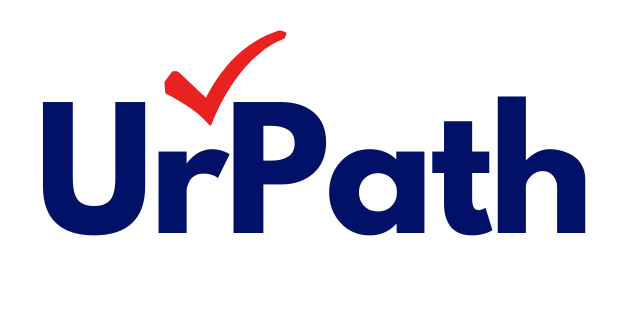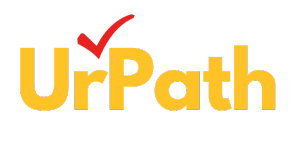How to Prepare a Webinar as Part of a B2B Marketing Campaign
Hayoung Kim • November 14, 2024
Book Your Free Initial Consultation Today
From Planning to Pipeline: How to Run a High-Impact Product Webinar

Webinars are a powerful tool in the B2B marketer’s arsenal. They provide a versatile platform not only to showcase your product but also to launch and discuss a new eBook or whitepaper, share thought leadership insights, or highlight compelling customer success stories. Whether your goal is to drive brand awareness, engage with your target audience, or generate qualified leads, webinars can help you achieve it. Drawing from my extensive experience running webinars across various companies, here’s a step-by-step guide to creating an impactful and effective webinar:
1. Identify Your Target Audience Through Data Analysis
Start by diving into your data to define who your target audience is. Look at your buyer personas, historical engagement, and product usage statistics. Knowing your audience helps tailor your content and messaging to address their specific needs and challenges.
2. Collaborate with Key Teams for Content Development
Once the target audience is identified, work closely with the Product Marketing (PMM), Content, Sales, and Customer Success Management (CSM) teams. PMM and Content teams play a crucial role in crafting core messaging that aligns with your brand guidelines and ensures you're targeting the right audience effectively. They help refine the product’s unique value propositions and create compelling, easy-to-understand materials. Collaborating with Sales and CSM teams provides valuable insights into customer pain points, success stories, and frequently asked questions, ensuring that your content resonates with both prospects and existing customers. Together, these teams ensure your messaging is impactful and aligned with your overall marketing and sales goals. Additionally, incorporate interactive polls and other engagement tools into your webinar presentations to create a more dynamic and engaging experience, ensuring sustained audience interest and participation throughout the session.
3. Select and Coordinate Speakers
Effective webinars often feature a mix of speakers:
- External Guest Speaker: Choose someone influential, like a satisfied customer with a compelling success story or an industry influencer. You could also collaborate with an influencer known for unbiased product reviews.
- Internal Expert: Select someone from your team who deeply understands the product and can answer technical questions.
- Moderator: Appoint a moderator to guide the discussion, keep the session on track, and facilitate audience engagement. The moderator can introduce speakers, manage Q&A sessions, and ensure a smooth flow of the webinar. The moderator could be you, as the organizer, or you could ask an internal team member with strong public speaking skills to take on this role if they’re interested.
Ensure all participants, including the moderator, are thoroughly briefed on the webinar’s objectives and their specific roles to deliver a seamless and impactful experience.
4. Plan and Schedule Meetings
- Initial Meeting: Align with all speakers to discuss talking points, review the presentation structure, and outline key content areas. Use this meeting to ensure everyone is on the same page regarding the webinar’s objectives and individual roles.
Develop Presentation Materials: After the initial meeting, compile the agreed-upon talking points into a polished PowerPoint or presentation deck. Ensure the presentation flows logically, highlighting key themes and including all essential content. If the webinar is product-focused, incorporate specific selling points that align with the messaging strategy.
- Prepare Speakers: Once the presentation materials are drafted, share them with all speakers. Ensure each speaker has access to the PowerPoint and is familiar with their assigned sections. To facilitate this, consider sending a detailed email outlining their responsibilities and offering to hold a follow-up check-in meeting if needed. This extra step ensures speakers feel confident and comfortable with their content.
- Adapt for External Speakers: For external speakers, pay close attention to their feedback. They may have reservations about covering certain topics, so be flexible and willing to adjust the content as necessary. Remove or reassign any material they are uncomfortable presenting to maintain their confidence and ensure a smooth delivery.
- Review Presentation for Brand Consistency and Accuracy: Before the Run-Through Session, collaborate with your Brand or Content Management team to verify that the presentation aligns with your brand guidelines. This ensures visual consistency, tone, and style are on-brand. Next, consult the PMM team to confirm that the messaging accurately reflects the product’s value propositions and strategic goals.
- Legal Review (if applicable): If your organization has a legal team, conduct a final review to ensure all content adheres to legal and compliance standards. This step is especially critical for product webinars to avoid sharing information that could be legally sensitive or misinterpreted.
- Run-Through Session: Conduct a rehearsal to ensure smooth transitions, refine delivery, and address any last-minute changes.
- Technical Check:
Meet at least 15 minutes before the live webinar to test equipment and troubleshoot potential issues.
5. Set Up the Landing Page and CRM Integration
Create a dedicated landing page to promote the webinar. The page should:
- Include a compelling headline and description.
- Offer clear value propositions to entice sign-ups.
- Collect essential information such as name, email, job title, company, company size, and country. Optionally, include a field for questions.
Work with the MOPs team to ensure the landing page is integrated with your CRM system. This enables you to track sign-ups and manage leads efficiently.
6. Leverage Historical Data for Planning
Webinar attendance rates can be unpredictable, but historical data offers valuable insights that can shape your strategy. For example:
- If the average attendance rate is 10%, you’ll need approximately 1,000 sign-ups to secure 100 attendees.
- Understanding your MQL conversion rates is crucial. If 10% of attendees typically convert to MQLs, you can estimate generating 10 MQLs from 100 attendees.
Using this data helps you set realistic benchmarks and allocate resources effectively.
Additionally, this process allows you to establish clear marketing goals. Start by asking critical questions:
- What do you want to achieve with this webinar?
- How many leads do you need to generate?
- What is your pipeline goal?
- How many MQLs are you aiming for?
- How will this webinar contribute to increasing brand awareness or driving engagement?
By defining your expectations upfront, you can reverse-engineer the necessary sign-ups to meet your MQL goals while also driving broader pipeline objectives. This approach helps generate high-quality leads, build a strong sales pipeline, and increase brand awareness. It ensures that your campaign efforts are not only aligned with MQL targets but also contribute to your overall business goals, such as expanding reach and positioning your brand effectively in the market.
7. Optimize Sign-Up Forms and Communications
Simplify the sign-up process:
- Keep required fields minimal.
- Use A/B testing to refine messaging. For example, adding a note about sending the webinar recording to all registrants—even if they can't attend—can boost sign-up rates.
8. Promote and Follow Up
Start promoting the webinar at least three weeks in advance, ideally four weeks if possible. Use email marketing, social media, and your website to maximize reach. As the webinar approaches, send reminder emails—a day before and one hour before the start time—to ensure higher attendance. If your budget allows, consider offering gift cards as an incentive to boost attendance rates.
After the webinar, follow up with both attendees and non-attendees:
- Share the recording and key takeaways.
- Send personalized emails to high-potential leads based on their engagement.
- Include a post-webinar survey to gather feedback and collect ideas for future webinar topics, helping you continually improve your content and strategy.
9. Collaborate with Sales and Customer Marketing Teams
As a Demand Generation marketer, it’s crucial to align with the Sales and Customer Marketing teams to ensure your webinar's success. Here's how to do it:
- Coordinate Invite Lists: Work closely with the Sales and Customer Marketing teams to ensure everyone who could benefit from the webinar is included in the invite list. Sometimes, a webinar’s content can be valuable to multiple departments, so it's important to communicate and collaborate.
- Equip Sales with the Right Tools: Provide the Sales team with tailored messaging to invite prospects personally. Create email drafts or sales pitches that can be sent from their inbox, making the invitation feel more personal and increasing the likelihood of attendance.
- Provide a Webinar Synopsis: Write a brief yet comprehensive synopsis of the webinar, highlighting key topics and takeaways. This ensures the Sales team is well-prepared to discuss the event and answer any inquiries from prospects or customers.
10. Post-Webinar Follow-Up and Resource Sharing
Once the webinar concludes, the follow-up process is just as important as the event itself:
- Equip Sales for Follow-Up: Provide the Sales team with post-webinar email drafts and talking points to re-engage attendees and follow up with prospects. Ensure these materials include specific selling points tied to the webinar content to keep the conversation relevant. It's also helpful to reference other relevant resources, such as e-books, reports, or case studies, released by your Content and Demand Generation teams. These resources can reinforce key messages and provide additional value, helping to drive deeper engagement with prospects.
- Create a Recording Landing Page: With permission from all speakers, create a dedicated landing page featuring the webinar recording. Work with the Marketing Operations (MOps) team to ensure this page collects additional leads and integrates seamlessly with your CRM system. Publish the page on your website to extend the webinar's reach.
- Send Recordings to Registrants: Email the webinar recording to attendees and those who signed up but couldn’t attend. This follow-up not only fulfills your promotional promise but also reinforces your brand’s value and keeps your audience engaged.
By following these steps, you ensure a comprehensive approach that maximizes the impact of your webinar on lead generation and customer engagement.
Conclusion
Running a successful product webinar doesn’t end when the event concludes. To maximize its impact, it’s crucial to leverage a dedicated CRM webinar dashboard to monitor performance. This dashboard should provide a comprehensive view of key metrics such as MQLs, SQLs, SALs, and pipeline contributions, broken down by region, SDR, and Account Executive (AE).
Regularly review the dashboard to track lead engagement, including activities like content downloads, visits to key web pages, and interactions with follow-up emails. Ensure the Sales team is conducting personalized outreach to maintain engagement and nurture relationships. Additionally, monitor conversion rates from webinar leads to MQLs, SQLs, and beyond to assess the overall effectiveness of the webinar in driving pipeline growth and meeting revenue goals.
Finally, schedule a post-webinar meeting with your internal teams (excluding external speakers) to review results, share insights, and give credit where it’s due. Acknowledge team members who went above and beyond during the planning and execution phases. Use this time to discuss what worked well and identify areas for improvement—there’s always room to optimize for future events. If a particular webinar topic resonated with your audience, consider organizing a follow-up session to build on that momentum and continue driving engagement.
Get in Touch!
If your organization is looking to develop an effective webinar strategy or needs expert assistance in planning and executing high-impact webinars, we’re here to help. At UrPath, we specialize in creating engaging and results-driven webinars that not only capture your audience’s attention but also drive meaningful outcomes like lead generation, pipeline growth, and increased brand awareness.
Whether you need guidance on crafting compelling content, managing logistics, or optimizing post-webinar follow-ups, our team is ready to support you every step of the way. Contact us today to learn how UrPath can help you elevate your webinar game and achieve your marketing and sales goals.
Got Any Questions?

Entering the U.S. education market can unlock transformative growth for EdTech companies—but it requires more than just a great product. To truly resonate with U.S. institutions, decision-makers, and students, foreign EdTech firms must understand the landscape, build trust, and execute a strategic, localized approach. Here are the essential steps to building a strong U.S. market strategy—and how we can help you every step of the way. 1. Understand the U.S. Education Ecosystem The U.S. education system is complex and decentralized, with thousands of independent decision-makers across K–12 districts, higher education institutions, and public agencies. It’s critical to understand how funding works, who holds purchasing power, and what challenges institutions are trying to solve. We help you navigate this landscape by providing market insights and identifying the right entry points for your solution. 2. Tailor Your Messaging for the U.S. Audience What works in one market may fall flat in another. U.S. educators and institutions care deeply about outcomes, alignment with curriculum standards, ease of implementation, and student impact. Your marketing materials, demo content, and success stories must speak directly to these concerns. Our team works with you to localize your messaging, refine your value proposition, and ensure your brand connects with the right stakeholders. 3. Build Early Trust Through Field Marketing Participating in local conferences, school district events, or university expos is a great way to meet decision-makers and showcase your commitment to the market. Being physically present helps establish trust—especially in a relationship-driven environment like education. We support your field marketing efforts with planning, outreach, and on-the-ground execution. 4. Establish Strategic Partnerships Collaborating with the right partners—whether it’s a local distributor, a university department, or a state-run initiative—can accelerate your growth. These relationships open doors to pilot programs, case studies, and future expansion. Through our network, we introduce you to key institutional contacts and help you form partnerships aligned with your mission. 5. Commit to Long-Term Engagement Success in the U.S. market rarely happens overnight. It requires persistence, follow-up, and a willingness to listen, learn, and adapt. Schools and universities want to know you’ll be there for the long run. We help you build a U.S. presence with sustained marketing support, strategic planning, and relationship-building that lasts. Ready to Grow in the U.S.? If you're an international EdTech company ready to connect with the U.S. market in a meaningful way, we’re here to help. Our U.S. Strategy Support service is designed to guide you through every stage—from market entry to long-term success. Let’s explore what’s possible—together.

South Korea is a global leader in education and technology, with strong public investment in lifelong learning, digital upskilling, and future workforce development. For EdTech companies looking to expand, Korea presents a unique opportunity—but only for those who are ready to approach it with insight and intention. Entering this market requires far more than translating your content or launching a local version of your platform. Success demands a deep understanding of Korea’s education culture, government priorities, and the trust-based relationships that drive decision-making. That’s where our Korea Strategy Support comes in. Deep Market Insight for Real Growth We help you understand Korea’s education landscape from the inside out—so you can enter with clarity, not guesswork. This includes: How public education is structured across national, regional, and local levels Who the real decision-makers are in institutions and government What current challenges and trends are shaping the market How EdTech solutions are evaluated and adopted in both K–12 and higher education Our goal is to give you the strategic insight needed to make smart decisions and avoid costly missteps. We Connect You to the Right People We don’t just share knowledge—we open doors. Over the years, we’ve built trusted relationships with Korean universities, vocational schools, lifelong learning centers, and regional government agencies. We’ll help you: Identify the right institutional or public-sector audiences Facilitate introductions and support outreach efforts Position your offering to meet local goals and cultural expectations Form lasting partnerships built on shared educational values Whether you're looking to launch a pilot, form a licensing agreement, or scale in a specific region, we tailor the strategy around your mission and Korea’s needs. Strategy That’s Built on Trust In Korea, reputation and relationships are everything. We guide you on how to align your brand and messaging with local expectations—helping you build credibility, understand the timing of government cycles, and prepare materials that resonate with institutional leaders. With our insight and guidance, you're not just entering a new market—you’re building a meaningful presence. Let’s Explore Korea Together Korea is more than a strategic opportunity—it’s a chance to make a real impact in a country that deeply values education and innovation. We’re here to help you approach it the right way. If you’re ready to explore what’s possible, we’re ready to guide you.


